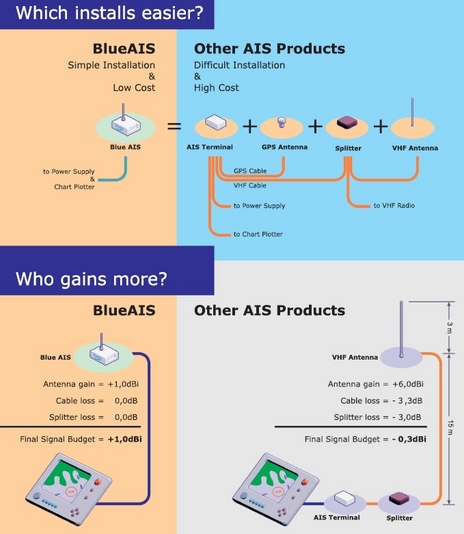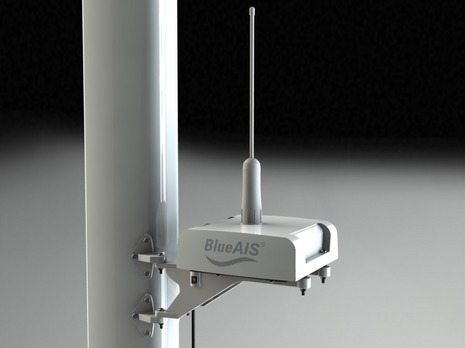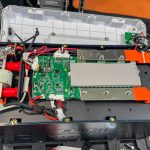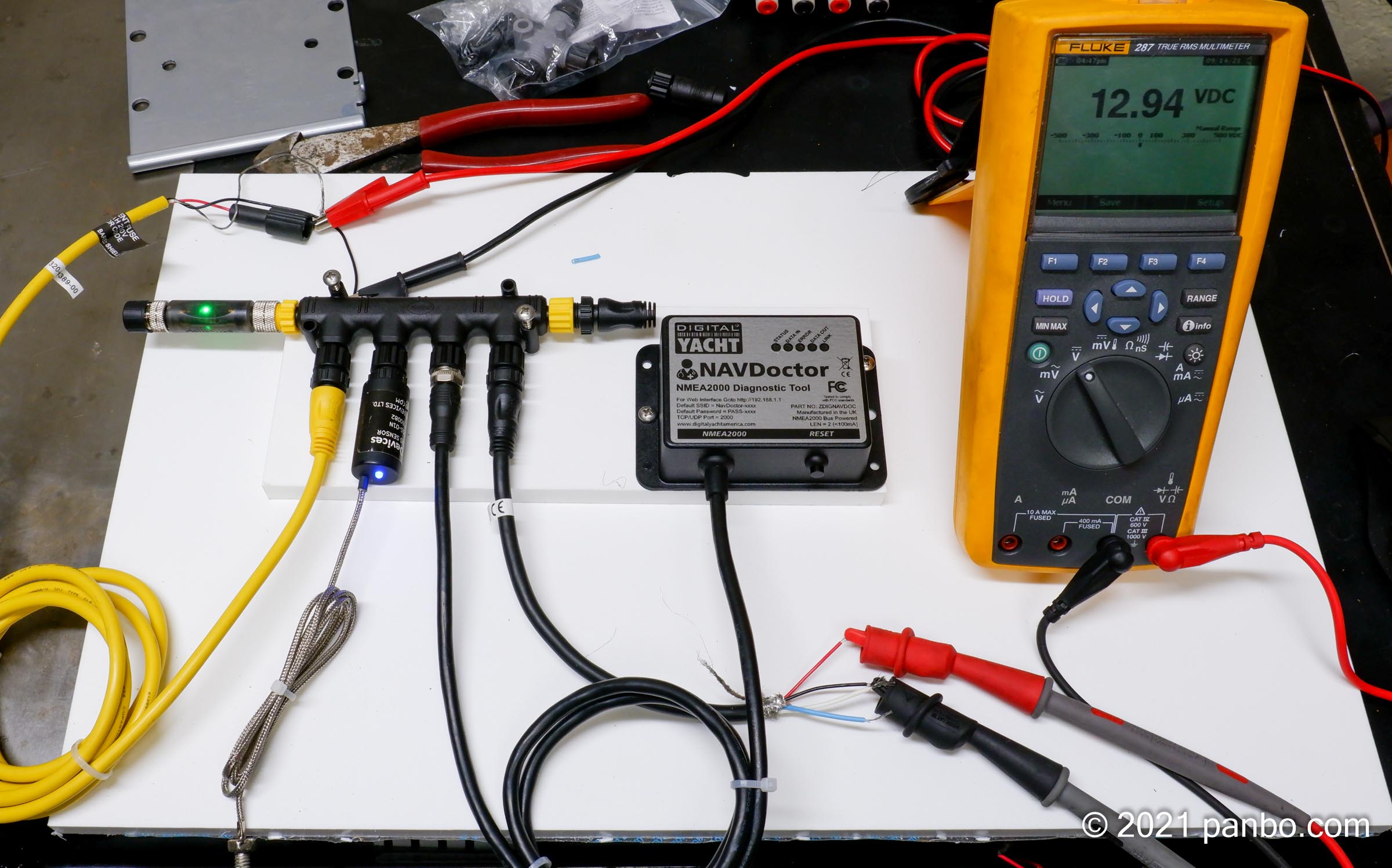BlueAIS Class B, standalone with room to grow
One of the very first Class B AIS transponder prototypes — the Shine Micro RadarPlus — was a standalone design, and it seemed to make a lot of sense (though for some reason it never came to market). It’s a little surprising then that EMA’s new BlueAIS is the first truly available standalone Class B, to my knowledge. Everything is in that 8-inch square waterproof box, and its single cable — which carries power, RS232 and 422 data feeds, and even “silent mode” switching to a little breakout box (with LED indicators) below — can be had in lengths up to 300 feet. The configuration purportedly performs very well and, because EMA already has a lot of experience with similar standalone marine communications designs, there are numerous mounting options now and interesting possibilities to come…
If you poke around the EMA BlueTraker site, you’ll see that they’ve been building various vessel monitoring and tracking systems for some time, and they all use a similar standalone design. Hence there are mounts for towers, masts, rails, and cabin tops. I’d also guess that they have the waterproofing and cabling well figured out. And the illustration below suggests how well a small AIS antenna can perform when the coax cable and splitter are eliminated (though the signal losses may be somewhat exaggerated?).
EMA’s Business Development Manager, Chris Eckersley, recently told me that BlueAIS will hopefully get FCC approval soon, and it should sell for about $900
here in the U.S. (and he is looking for distributors). He also said that EMA is working on a low cost, completely self-contained vessel security system that has mesh broadcasting abilities, and that the BlueTraker
LRIT — which uses an Iridium SBD modem — is the only one approved
for use in high latitudes. In fact, he noted that the miniaturization of those modems and of Class B AIS transponders (2nd gen SRT photos coming soon) mean that future models of the BlueAIS will have some novel capabilities. Combine that tease with what’s happening in the sat phone world and there’s little doubt that things are going to get interesting.
















Looks great. Sure would like to see an AIS B transponder support WiFi in addition to RS-232/USB. More specifically the ability to create an AdHoc network (like the Digi Connect WI-Sp does). This would allow devices like iPhone and iPad to connect without need for a Mac/PC aboard.
+1 for GPSNavX’s comment!
I’d also love to see a Class A non-SOLAS
done the same way. there’s really no reason
it would be “hard”.
Ben, the signal losses are in my opinion not exaggerated at all. EMA considers using a 6dBi antenna, which normally is a whip of about 3m lenghts. If you use a standard masttop sailboat antenna instead (like the Metz Manta6) it has no gain at all. If you look at the COMAR Splitter AST200, it has a loss of 4dB in receive direction and 0,8dB in transmit direction. This is quite a lot.
I am running a COMAR SLR200N networked AIS receiver here on my balkony and the Class B Transponders of the two yachts I have access to are hard to detect. This might be mostly related to the 2W transmit power compared to 12W in Class A devices. Especially the yacht with the splitter has a weak signal. Interestingly they themselves can see ships up to 20nm.
Forget AIS, how about offering a VHF radio this way.
– Eliminate the signal loss from 80 feet of cable.
– No thick antenna wire to snake thru the mast.
$900? Seriously? Cmon manufactures, get these prices down *SIGH* … $500 is the price-point to beat for Class-B AIS transponders (and the only reason it’s even that high, is because that’s what the market will bear right now).
How does the unit interface to other units? USB? NMEA2000?
Stein, the data standard for AIS is NMEA 0183, which uses RS232 and/or RS422 serial electrical interfaces (they are very similar). The BlueAIS has both interfaces, which is typical of most every AIS receiver and transponder, and means you can hook one to both an MFD and a PC simultaneously. You will need a serial-to-USB converter if your PC doesn’t have a regular serial port.
Some AIS units have a USB converter built in, and some have an added NMEA 2000 interface, but the BlueAIS has neither.